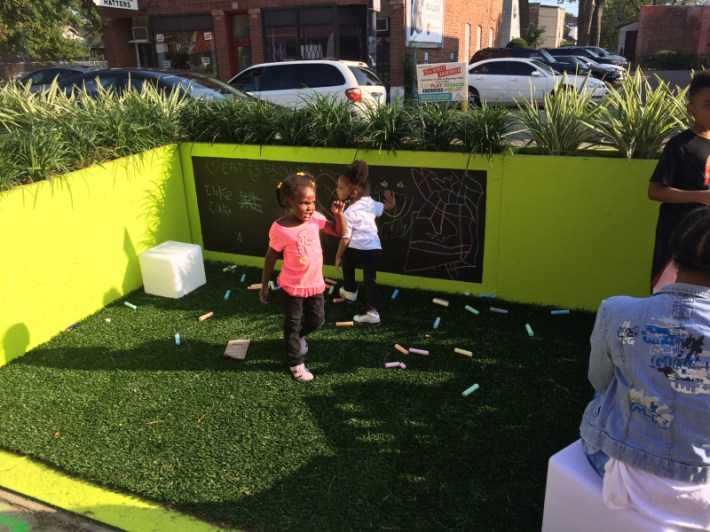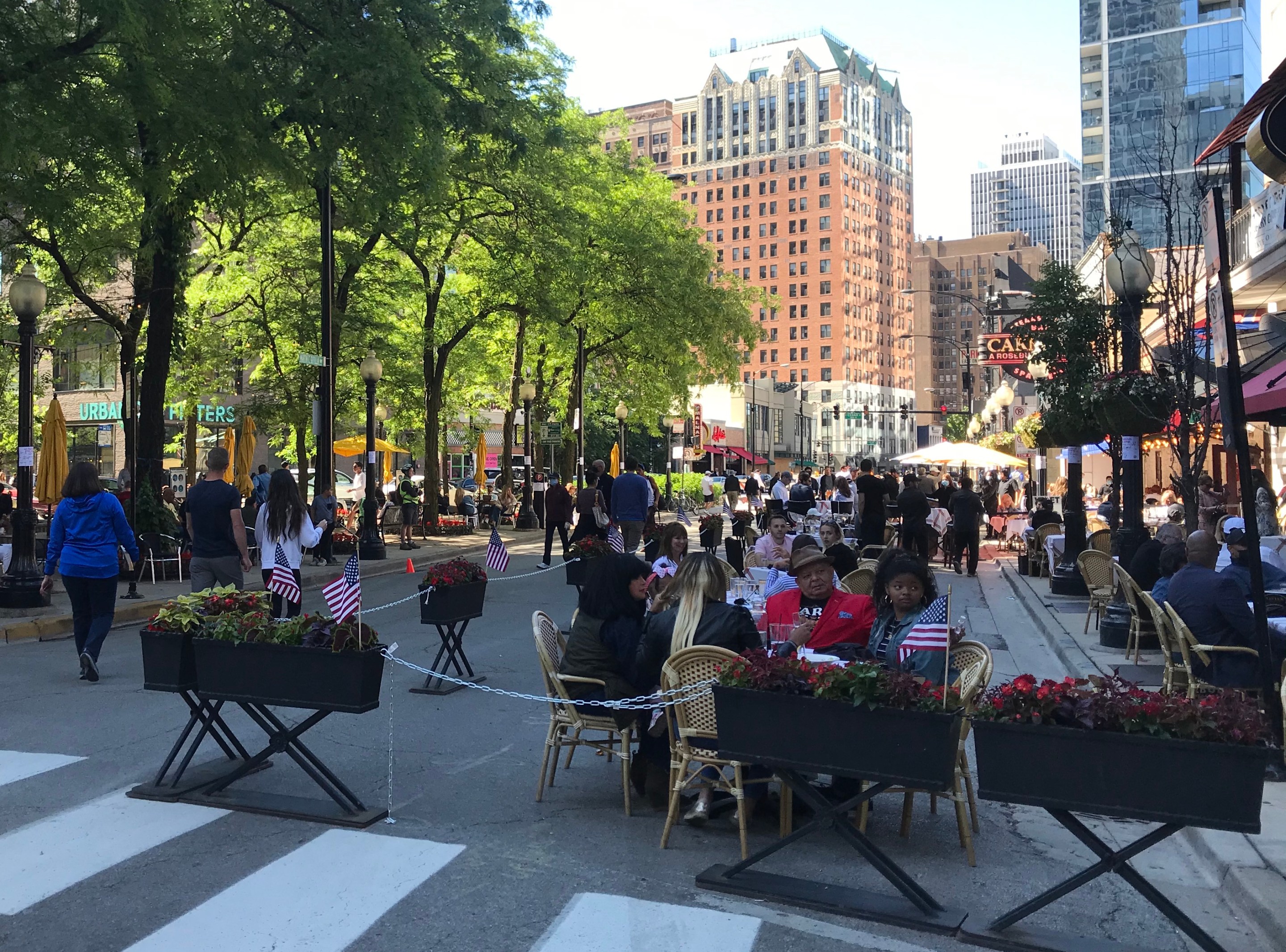Last Friday Mayor Lori Lightfoot announced Chicago Alfresco, a program to increase outdoor dining space and create longterm outdoor public spaces. This initiative builds on last year’s wildly successful Cafe Streets initiative, officially called the Outdoor Expanded Dining program, which eased regulations and fees for outdoing dining and drinking on parking lots and sidewalks during the COVID-19 pandemic, and pedestrianized dozens of streets around the city to make additional room for it.
The new Al Fresco initiative is the city's effort to build on that success by inviting chambers of commerce and other community groups to create innovative outdoor community spaces, ideally something more aesthetically pleasing, engaging, and longterm than emergency traffic barricades and construction cones. A press release from the city refers to the Al Fresco program as “part of a broader initiative to open streets and create places for dining, public life, community, arts, culture, walking, and biking.”
Lightfoot acknowledged that not every neighborhood has been able to take advantage of outdoor dining. (In some cases such as on 26th Street in Little Village, leaders and merchants ultimately opted out of the city's proposal to pedestrianize a road segment, under the belief that it would be bad for business.) But the mayor said the Al Fresco initiative “will significantly increase our city’s ability to fully revitalize the public way." The city sees this as an opportunity to enhance Chicagoans' quality of life and attract tourists.
Applicants to the program are encouraged to thoughtfully design “visually appealing community places that cultivate a sense of ownership, belonging, and safety through activation, physical transformation, community engagement, and economic development.” The website for the program states projects must be for a minimum of six months and preference will be given to proposals that commit up to three years.

Potential project types include the following:
- Existing Plaza Programming - CDOT has about 50 plazas under its jurisdiction. Respondents can propose to activate these plazas with movable furnishings for outdoor dining and public use, as well as other types of installations.
- Street / Alley Activations - Pedestrianizing a street or alley for dining or community programming.
- Curbside Use (platform and non-platform) – Converting parking spots to outdoor dining or public seating, with or without a raised platform, aka a People Spot. A Sidewalk Cafe permit is required for dining service.
While the city government itself is not providing financial assistance for the program, Choose Chicago, the city's tourism bureau, is accepting applications for funding guidance for Alfresco projects from chambers of commerce, Special Service Areas, and other not-for-profit organizations. If you're interested in applying for this assistance, contact Choose Chicago directly at neighborhoods@choosechicago.com.
This is definitely welcome language from the city of Chicago. I am curious as to how the Al Fresco program will play out and whether or not the residents of Chicago are truly ready for more longterm outdoor dining space, especially if it means transforming space currently used for storing vehicles.
“Chicago has never needed its streets more, and we’ve never needed more out of our streets," said CDOT commissioner Gia Biagi in a statement. "As the crises mounted last year, we supported neighborhoods with streets open for healthy activity [i.e. Slow Streets], community connection, and for safe, outdoor dining. As we emerge from the shadow of the pandemic, we must continue to put our streets in the service of what people and small businesses need in their neighborhoods to keep everybody safe and moving while keeping us all together.”
CDOT is accepting applications between now and April 15. The first round of plans will be approved by April 30. Interested community groups can ask questions about the application process and what the city is looking for by attending a virtual webinar on Friday March 26 at 3pm. More information is available on CDOT's website and the city's tourism website.





